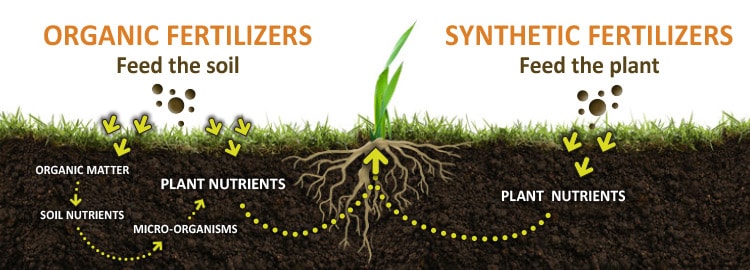Fertiliser Explained: Jump Start Your Soil
PublishedFertilising your garden is one of the easiest ways to ensure strong, healthy plants. But with so many options, choosing the best fertiliser for your garden can seem daunting. Let’s go over the different types of fertiliser, and what each brings to the table.
What Is Fertiliser?
Fertiliser is a material made of natural or synthetic components designed to add nutrients to the soil. There are liquid and granular fertilisers, which can be placed on or worked into the soil. Liquid fertilisers are fast acting, making the nutrients quickly available for your plants, and are easy to apply while watering. Granular fertilisers are commonly called “slow release” because they slowly add their nutrients to the soil over time, ensuring your plants a consistent supply as they grow.
Most garden fertilisers have NPK values on the label, which stands for Nitrogen (N), Phosphorus (P), and Potassium (K). These nutrients are three key building blocks for plant growth.
- Nitrogen is responsible for leaf growth, and is what keeps plants green. High-nitrogen fertilisers are great for plants with a leafy harvest, such as lettuce, cabbage, and herbs.
- Phosphorus promotes the development of roots, flowers, and fruit. Strong roots will help to keep your plants anchored in place, as well as giving your plant easier access to water and other nutrients in the soil.
- Potassium (also known as potash) supports overall growth and plant health. It helps your plants resist disease, endure harsh weather conditions, and assists with the movement of water and nutrients within the plant.
NPK values are written as a ratio. 10:10:10 is equal parts of each nutrient, whereas 10:1:1 would be 10 times more nitrogen than phosphorus and potassium. Each nutrient value is the percentage of the fertiliser is that nutrient, and dividing 100 by the nutrient value is how to calculate how much fertiliser to apply to add 1lb (450g) of it to the soil. For a 10:10:10 ratio, 100 divided by 10 is 10, so you would need to use 10lbs (4.5kg) of the fertiliser to add 1lb (450g) of each of the nutrients to the soil.
Be sure to research which fertiliser is best for your produce. For example, using a high-nitrogen fertiliser on carrots will have the plant focusing on producing lots of healthy leaves instead of focusing on root development.
Organic vs Synthetic
Organic fertilisers are derived from plant or animal materials, with possible ingredients including kelp, bone meal, and manure. They have lower NPK values than their synthetic counterparts, and their nutrients are released more slowly, meaning your plants are fed for a longer period of time. Organic fertilisers are broken up by microbes in the soil, which promotes a healthy soil ecosystem. The soil becomes richer and more fertile, and soil texture improves.

Synthetic (or inorganic) fertilisers are derived from synthesised or processed compounds such as minerals, gasses from the air, and inorganic waste materials. They have higher and more precise NPK values, and are made available to plants much faster than organic fertiliser. While they are much faster-acting, synthetic fertilisers do little to improve the soil health, will need to be reapplied more often, and excessive amounts can burn or damage plants. Additionally, synthetic fertilisers are highly water-soluble, and can leach into waterways.
What About Compost?
Compost is a nutrient-rich mixture of decayed organic matter such as leaves, grass, and manure. Compost offers the same benefits of organic fertilisers, with a few things to keep in mind. You can make your own compost, but it takes several months before it’s ready for use in the garden. Additionally, if any diseased plant material was used in the compost, or if any flowering weeds were accidentally added, those may become issues wherever the compost is used in the garden.

